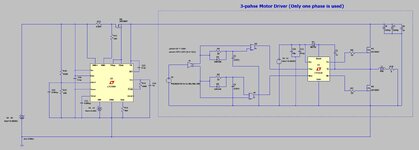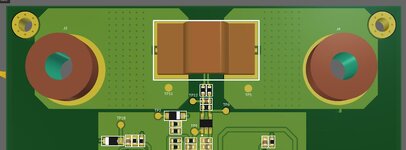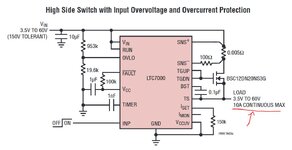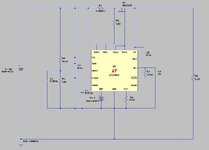H2M
Member level 1
Hi
I'm trying to design a 3-phase motor driver. I want to have over current protection in my design, so I have used LTC7000 in order to have over current protection in my bus line. the problem is I can't raise the MOSFET current (Load Current) above 10 Amps! with any shunt resister LTC7000 will turn off the MOSFET when current reach above 10 Amps. Can anybody help me? I attached below my LTspice simulation.
I'm trying to design a 3-phase motor driver. I want to have over current protection in my design, so I have used LTC7000 in order to have over current protection in my bus line. the problem is I can't raise the MOSFET current (Load Current) above 10 Amps! with any shunt resister LTC7000 will turn off the MOSFET when current reach above 10 Amps. Can anybody help me? I attached below my LTspice simulation.




